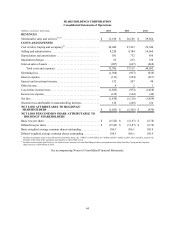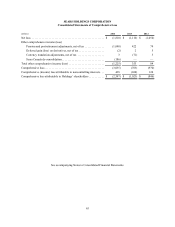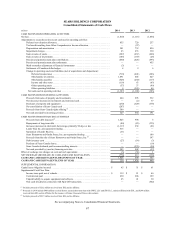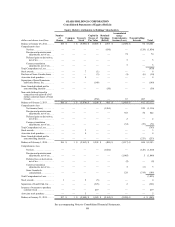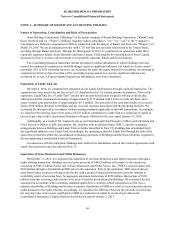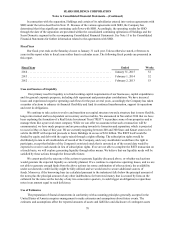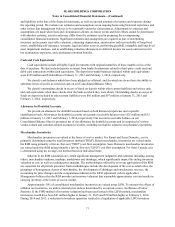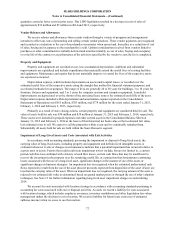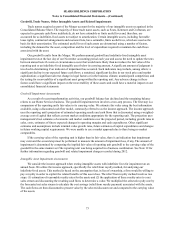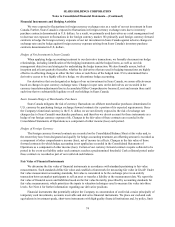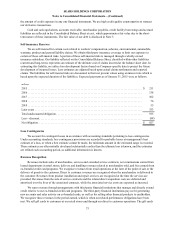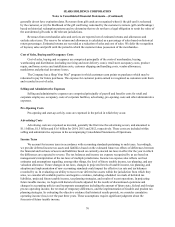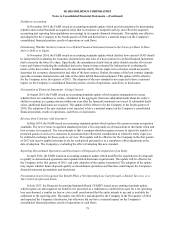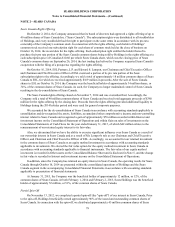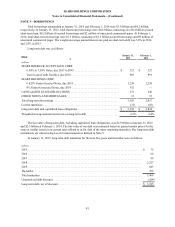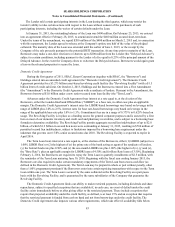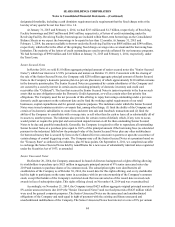Sears 2014 Annual Report Download - page 74
Download and view the complete annual report
Please find page 74 of the 2014 Sears annual report below. You can navigate through the pages in the report by either clicking on the pages listed below, or by using the keyword search tool below to find specific information within the annual report.SEARS HOLDINGS CORPORATION
Notes to Consolidated Financial Statements—(Continued)
74
Financial Instruments and Hedging Activities
We were exposed to fluctuations in foreign currency exchange rates as a result of our net investment in Sears
Canada. Further, Sears Canada is exposed to fluctuations in foreign currency exchange rates due to inventory
purchase contracts denominated in U.S. dollars. As a result, we primarily used derivatives as a risk management tool
to decrease our exposure to fluctuations in the foreign currency market. We primarily used foreign currency forward
contracts to hedge the foreign currency exposure of our net investment in Sears Canada against adverse changes in
exchange rates and to hedge against foreign currency exposure arising from Sears Canada's inventory purchase
contracts denominated in U.S. dollars.
Hedges of Net Investment in Sears Canada
When applying hedge accounting treatment to our derivative transactions, we formally document our hedge
relationships, including identification of the hedging instruments and the hedged items, as well as our risk
management objectives and strategies for undertaking the hedge transaction. We also formally assess, both at
inception and at least quarterly thereafter, whether the derivatives that are used in hedging transactions are highly
effective in offsetting changes in either the fair value or cash flows of the hedged item. If it is determined that a
derivative ceases to be a highly effective hedge, we discontinue hedge accounting.
For derivatives that are designated as hedges of our net investment in Sears Canada, we assess effectiveness
based on changes in spot currency exchange rates. Changes in spot rates on the derivatives are recorded in the
currency translation adjustments line in Accumulated Other Comprehensive Income (Loss) and remain there until
such time that we substantially liquidate or sell our holdings in Sears Canada.
Sears Canada Hedges of Merchandise Purchases
Sears Canada mitigates the risk of currency fluctuations on offshore merchandise purchases denominated in
U.S. currency by purchasing foreign exchange forward contracts for a portion of its expected requirements. Since
the Company's functional currency is the U.S. dollar, we are not directly exposed to the risk of exchange rate
changes due to Sears Canada's merchandise purchases, and therefore we do not account for these instruments as a
hedge of our foreign currency exposure risk. Changes in the fair value of these contracts are recorded in the
Consolidated Statements of Operations as a component of other income (loss) each period.
Hedges of Foreign Currency
The foreign currency forward contracts are recorded on the Consolidated Balance Sheet at fair value and, to
the extent they have been designated and qualify for hedge accounting treatment, an offsetting amount is recorded as
a component of other comprehensive income (loss), net of income tax effects. Changes in the fair value of those
forward contracts for which hedge accounting is not applied are recorded in the Consolidated Statements of
Operations as a component of other income (loss). Certain of our currency forward contracts require collateral to be
posted in the event our liability under such contracts reaches a predetermined threshold. Cash collateral posted under
these contracts is recorded as part of our restricted cash balance.
Fair Value of Financial Instruments
We determine the fair value of financial instruments in accordance with standards pertaining to fair value
measurements. Such standards define fair value and establish a framework for measuring fair value in GAAP. Under
fair value measurement accounting standards, fair value is considered to be the exchange price in an orderly
transaction between market participants to sell an asset or transfer a liability at the measurement date. We report the
fair value of financial assets and liabilities based on the fair value hierarchy prescribed by accounting standards for
fair value measurements, which prioritizes the inputs to valuation techniques used to measure fair value into three
levels. See Note 4 for further information regarding our derivative positions.
Financial instruments that potentially subject the Company to concentration of credit risk consist principally of
temporary cash investments, accounts receivable and derivative financial instruments. We place our cash and cash
equivalents in investment-grade, short-term instruments with high quality financial institutions and, by policy, limit


